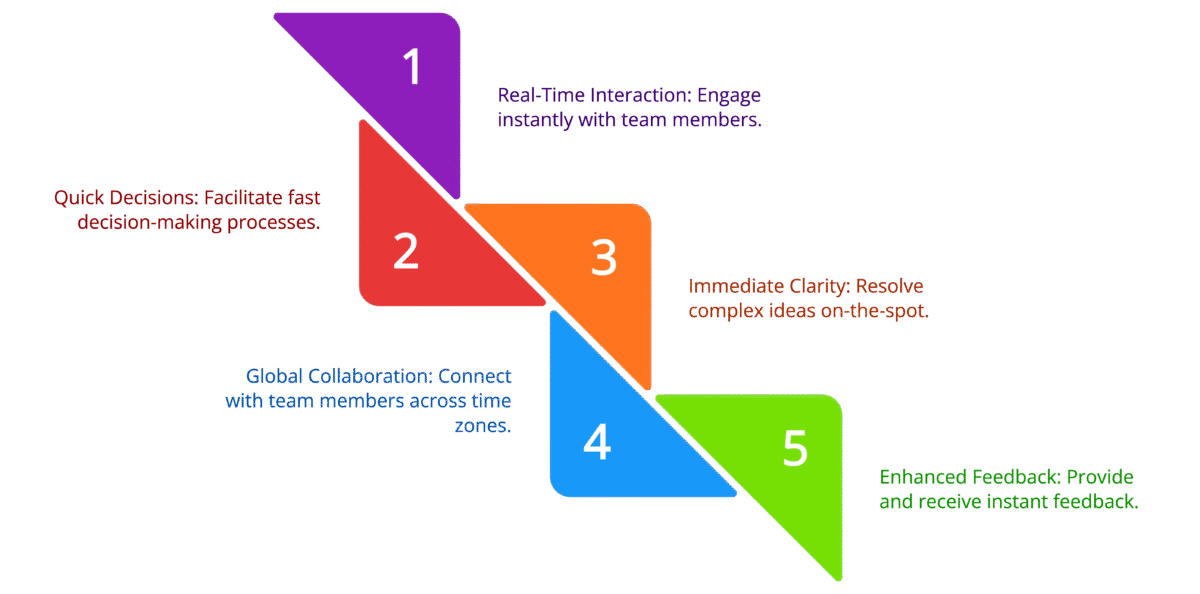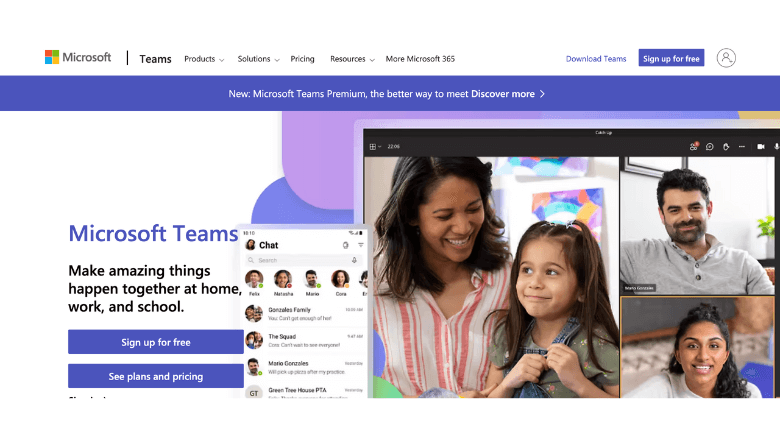
Key differences between asynchronous and synchronous communication for managing global teams
Managing global teams can be daunting, especially when coordinating across multiple time zones and diverse cultures. Whether your team operates remotely or in hybrid environments, effective communication is critical to success. Asynchronous and synchronous communication represent two primary methods of information exchange, each with distinct advantages and challenges.
Thank you for reading this post, don't forget to subscribe!Understanding these differences and knowing when to use each method allows you to better manage your team, drive productivity, and foster collaboration.
Asynchronous Communication: Flexible, Independent, and Scalable
Asynchronous communication allows participants to send messages or share updates at their own pace, without expecting an immediate response. It’s a method that prioritizes flexibility, giving team members more control over when and how they engage with each other.
For global teams, this form of communication is often ideal. Team members working in different time zones can communicate without being online simultaneously. This eliminates the need for real-time interaction and helps teams manage projects across multiple locations without overlapping work hours.
The benefits of asynchronous communication extend beyond just convenience. It allows for deeper thought processing and more thorough responses. When someone isn’t required to reply instantly, they have time to reflect, research, and craft their message more carefully. As a result, messages tend to be more detailed and well-considered, which can lead to fewer misunderstandings.
Synchronous Communication: Immediate Interaction for Speed and Clarity

Synchronous communication, on the other hand, requires participants to be available at the same time to exchange information. This could involve video calls, instant messaging, or phone calls. The immediacy of synchronous communication is often crucial when decisions need to be made quickly, or when complex ideas need to be clarified immediately.
In global teams, synchronous communication can foster real-time collaboration and ensure that issues are resolved quickly. If a project requires intense problem-solving or brainstorming, synchronous sessions like video conferences can allow team members to share insights and come to a decision in a much shorter amount of time compared to asynchronous methods.
While synchronous communication provides benefits in speed and clarity, it also requires all participants to be available simultaneously. This can be a challenge when dealing with global teams spread across different time zones. Scheduling meetings or calls can sometimes feel like a logistical puzzle, and it may lead to delays if some members are unavailable. Additionally, the pressure to be “always on” during real-time interactions can sometimes lead to fatigue or burnout, particularly if the global team has little overlap in working hours.
Time Zone Differences and the Role of Flexibility

One of the major challenges faced when managing global teams is the time zone gap. Asynchronous communication significantly reduces the time zone dilemma by enabling team members to engage whenever it suits them. For example, someone in New York can send an update to a colleague in Tokyo, who then replies the following day, without either party feeling the pressure of synchronous expectations.
Conversely, synchronous communication can become a complex puzzle when teams span several time zones. A meeting scheduled for 10 a.m. in New York may be impossible for someone in Sydney, where it’s already evening. As a result, teams may need to employ rotating meeting times to accommodate all time zones, but this requires flexibility and can still result in some members being left out.
While asynchronous methods provide relief from time zone challenges, they do require careful planning and documentation. Without real-time interaction, it can become difficult to gauge whether everyone is on the same page. This is where tools such as project management software, shared documents, and communication platforms become invaluable.
Quality of Interaction: Deep vs. Rapid Exchange
Asynchronous communication is ideal for more thoughtful, deliberate exchanges. It’s especially useful for sharing updates, feedback, and information that doesn’t require immediate clarification. Documents, emails, and recorded videos allow team members to digest information in their own time, leading to a deeper understanding of the content. However, this method can sometimes feel disconnected, as it lacks the immediacy of a conversation where questions can be answered in real-time.
Synchronous communication excels in contexts where immediate feedback is essential. In a brainstorming session, for example, team members can provide instant feedback and adjust their ideas based on real-time input. However, while synchronous communication provides clarity and rapid exchanges, it’s often less comprehensive. With participants speaking over one another or rushing to meet deadlines, the interaction can sometimes feel rushed and incomplete.
Furthermore, with synchronous communication, miscommunications are often harder to resolve quickly. If a participant doesn’t understand something, it may be difficult to articulate those concerns in real-time, which could result in confusion that lingers even after the meeting ends.
Impact on Collaboration and Team Bonding

In global teams, building strong relationships and fostering trust is crucial to long-term success. Asynchronous communication is less personal but can still foster collaboration by creating a record of exchanges that team members can return to as needed. This can promote transparency and provide an archive of decisions made and ideas shared, allowing new members to catch up quickly.
However, because asynchronous communication doesn’t allow for real-time interaction, team bonding can be difficult to cultivate. It’s harder to build rapport when you don’t regularly interact face-to-face (even virtually). This could lead to feelings of isolation, particularly in fully remote teams. Regular check-ins and team-building activities, such as virtual coffee breaks or informal chats, can help bridge this gap.
Synchronous communication, by contrast, is a great tool for bonding. It provides face-to-face interaction that fosters camaraderie and allows team members to engage in non-work-related conversations. Video calls allow for spontaneous exchanges and provide a human element that asynchronous methods lack. It’s through these real-time interactions that teams often form close-knit relationships, which can translate into more effective collaboration.
Decision-Making: Speed vs. Thoroughness
When managing global teams, decision-making plays a crucial role in the success of a project. In some situations, you may need decisions made quickly to keep things moving forward. Synchronous communication is beneficial for urgent decision-making, as it allows everyone to discuss issues, ask questions, and come to a resolution on the spot.
However, this speed comes at the expense of thoroughness. In high-stakes situations where careful consideration is necessary, asynchronous communication may be the better option. It allows time for reflection and consultation with relevant stakeholders, ensuring all perspectives are considered before making a final decision.
The challenge, however, lies in balancing speed and thoroughness. Some decisions require rapid responses, while others benefit from detailed analysis. In practice, a blend of both synchronous and asynchronous communication methods may be necessary, depending on the urgency and complexity of the decision at hand.
Tools for Managing Asynchronous and Synchronous Communication

The choice between asynchronous and synchronous communication also depends heavily on the tools used to facilitate these interactions. For asynchronous communication, project management tools such as Slack, Trello, or Jira enable teams to share updates and track progress on tasks. Video recordings, such as Loom, allow for clear explanations of complex topics without the need for live meetings. These tools allow teams to stay connected without requiring all members to be online at the same time.
For synchronous communication, video conferencing tools such as Zoom, Microsoft Teams, or Google Meet enable face-to-face communication in real-time. These platforms allow teams to collaborate, brainstorm, and address immediate concerns.
When managing global teams, integrating both types of communication tools creates a well-rounded approach. Teams can collaborate asynchronously during their working hours and sync up during scheduled meetings to address urgent matters.
Finding the Right Balance
The key to managing a successful global team lies in finding the right balance between asynchronous and synchronous communication. By understanding the strengths and weaknesses of each approach, you can tailor your communication strategies to fit the needs of your team. Asynchronous communication offers flexibility, thoroughness, and scalability, while synchronous communication allows for speed, clarity, and bonding.
By strategically using both methods, global teams can function smoothly, ensuring that no matter the time zone, collaboration remains effective and productive. The ultimate goal is to create a communication strategy that enhances the performance of your team while respecting the diverse needs of each member.


